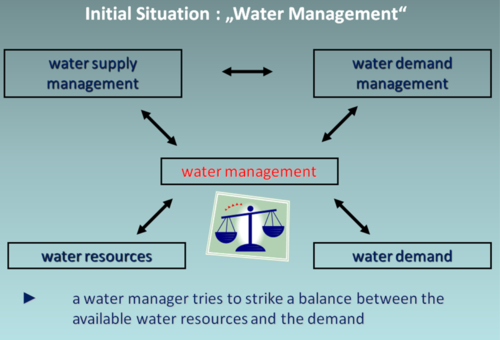Water demand management
Definitions for Water Demand Management (WDM):
- WDM aims to increase water efficiency through both wise use and reduction, which in turn will reduce or postpone the need to build more dams and drill more boreholes (Macy, 1999; Arntzen, 2003),
- WDM seeks to maximize the usage of a given volume of water by curbing inessential or low-use values through price or non-price measures (SADC-WSCU, 1999),
- WDM is the development and implementation of strategies aimed at influencing water demand in order to achieve water consumption levels that are consistent with equitable, efficient and sustainable use of the finite water resource (IUCN-WaterNet Postgraduate Training Module on Water Demand Management, 2003),
- WDM is a management approach that aims to conserve water by influencing demand. It involves the application of selective incentives to promote efficient and equitable use of water. WDM has the potential to increase water availability through more efficient allocation and use. This is guided by economic efficiency; equity and access; environmental protection and sustainable ecosystems functioning; governance based on maximum participation; responsibility and accountability and political acceptability (IUCN 2000).
Incentives for implementing WDM
- The incentives for implementing WDM in the region and in individual countries are numerous:
- resource protection: Managing demand eases pressure on scarce resources
- increased production: It is more productive to encourage or adopt measures for efficient use of water than to invest in additional sources of supply
- a sound basis for planning: Estimates of present and future sectoral water use can be made
- water loss reduction: This promotes the sustainability of the resource
Examples of WDM implementation:
- attitude change
- small scale irrigation
- irrigation in agriculture
- rainwater harvesting
- measurement of losses
- the environmental perspective on water subsides
- health risks and benefits
- development of WDM-plan

